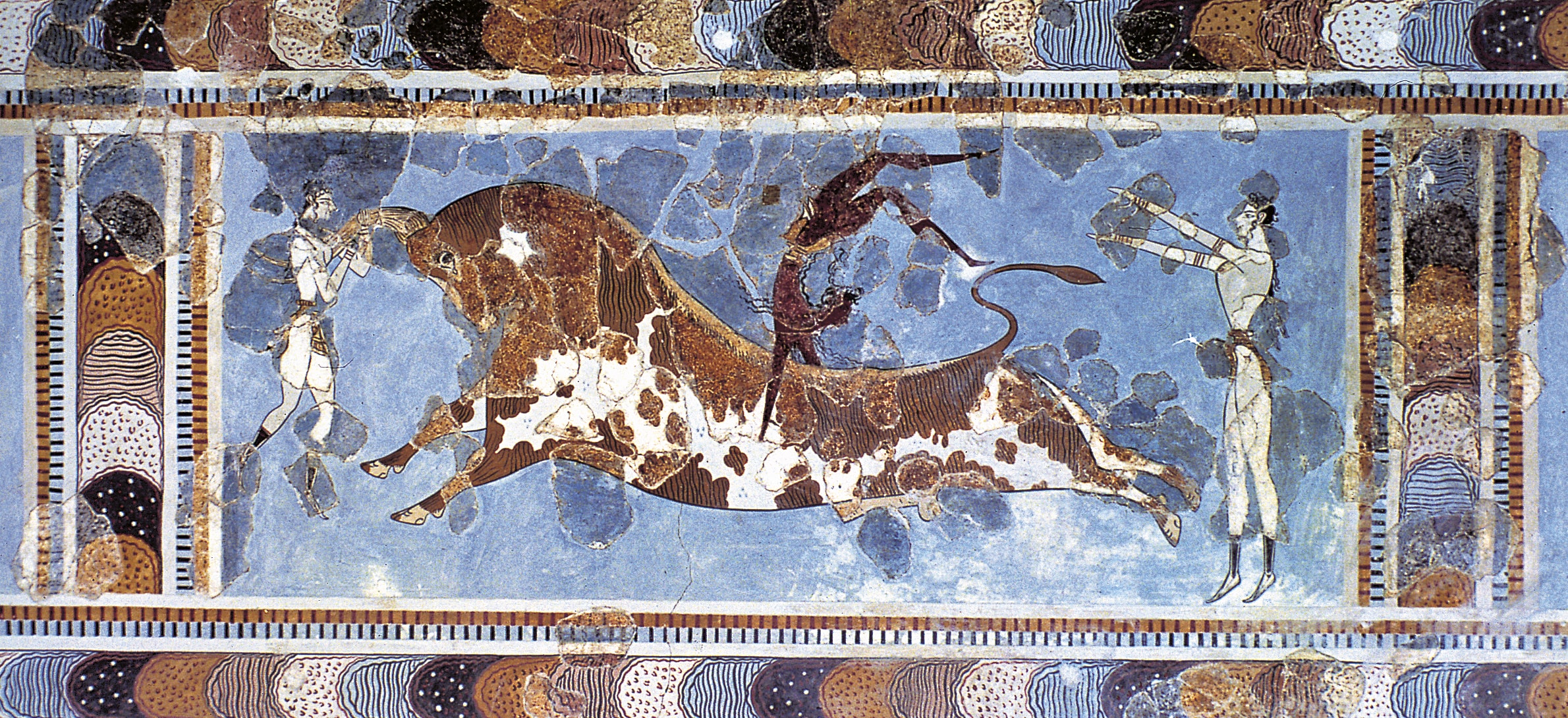
Centaurs were monstrous and wild creatures that lived in the woods of Thessaly. They were born from Ixion and Nephele, their body half man and half horse is the mythical transposition of the cult that the ancient Kentauros tribe, like that of the Lapitos, had for the horse, an animal sacred to the Moon Goddess.
These two cousin tribes were constantly at war with each other and when the Hellenes decided to conquer their lands they had an easy time turning them against each other. The confrontation between the two tribes and the conquest strategy of the Hellenes are at the origin of some mythical episodes represented in the temple of Zeus in Olympia and in that of Theseus in Athens.
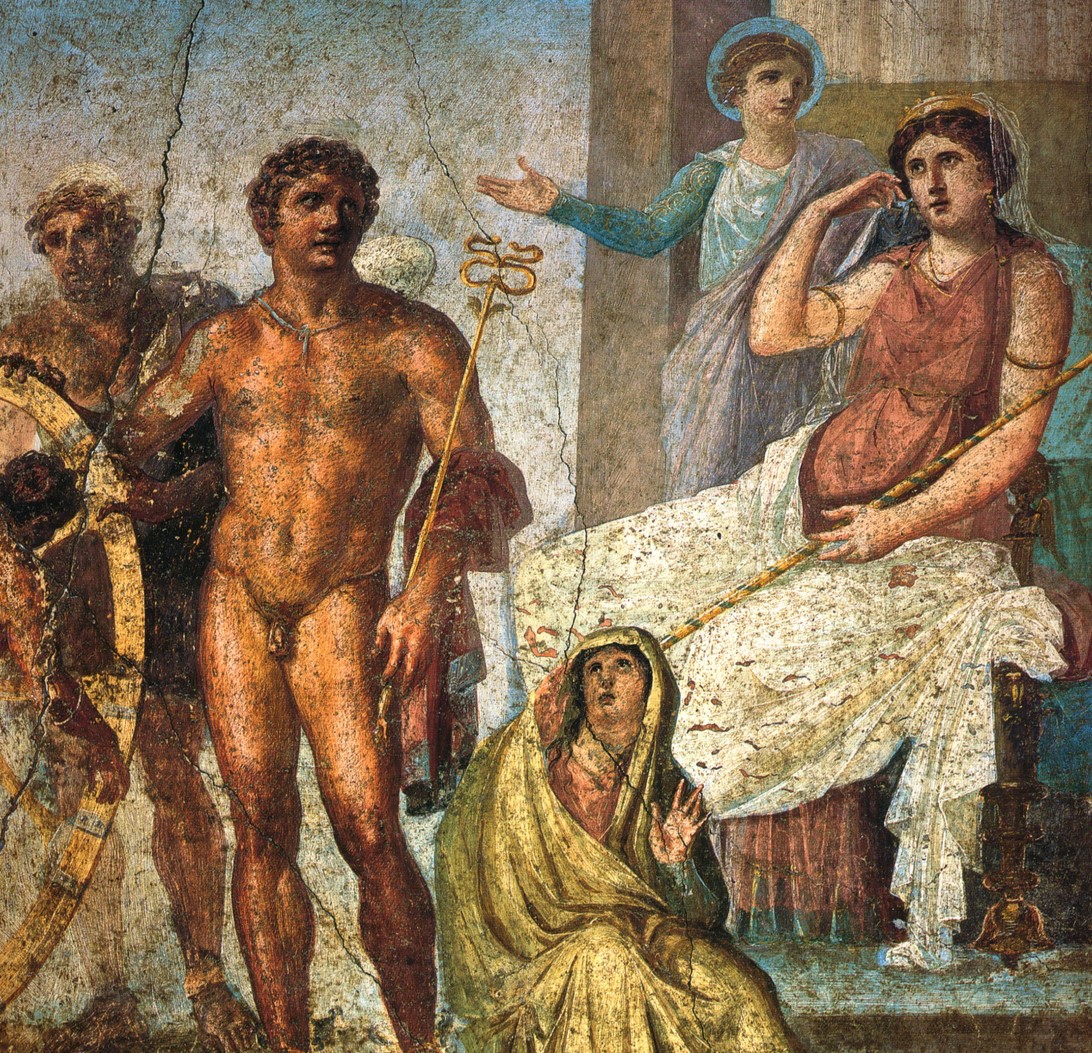
Nephele at the feet of Hermes – Punishment of Ixion fresco House of the Vettii, Pompeii IT
In Greek mythology the Kentauroi were a primitive race that lived in the woods and in the caves they had made their homes, they hunted animals to eat them and their weapons were heavy stones and sticks. They were born from the violence that Ixion, king of the Lapiths, guest at a banquet of the gods, drunk due drinking too much wine, had used on Nephele the cloud to which Zeus had given the shape of Hera. From that union was born a monstrous creature called Kentauros who then became an adult joined the mares grazing on the plains of Magnesia in Ionia, and from which the lineage of the Centaurs, also known as Hippocentaurs, began.
In Greek mythology the Centaurs belong to the large group of monsters and not only for their half animal and half human body, but for their inclinations among which the most evident is their inability to have relationships in compliance with social norms.
According to Pindar, the characteristics of the Centaurs would be connected to the methods of conception of their progenitor, Kentauros on which the poet dwells in Pytica II, an ode he wrote to exalt Hieron II tyrant of Syracuse and in which he used the events involving Ixion described as a sample of ingratitude and metaphor of that primacy also achieved by Anassilao who tried in vain to take possession of Locri.
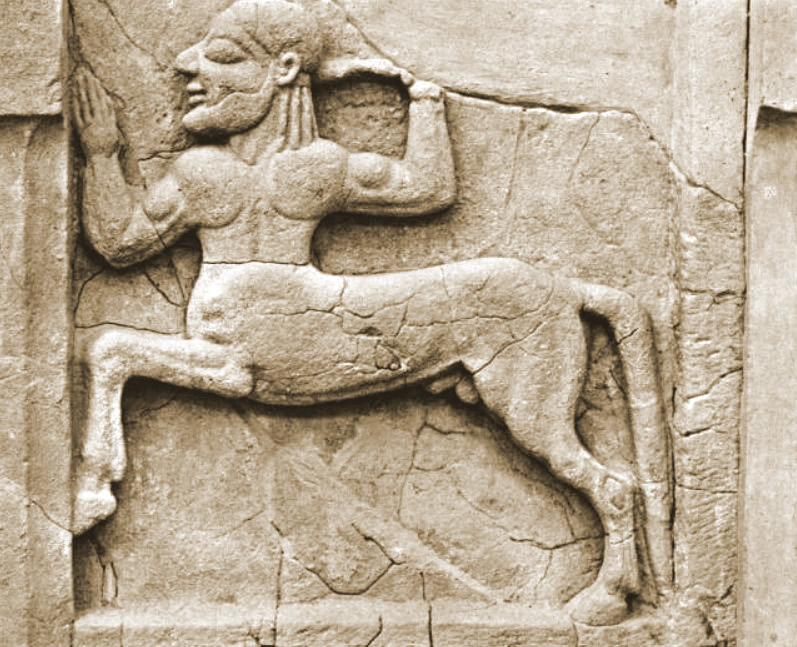
Kentauros, metopes of the Temple of Hera at the mouth of the Sele - Museum of Paestum IT
From the union of Ixion and Nephele, the ethereal form of Hera, would have been born Kentauros, a monster:
"Without the Graces, the Cloud, only it fruitful, gave him
only one, a horrible offspring,
what value don't have among men
nor with the Celestials. He raised him, Centauro said it.
And he at the foot of Pelion joined fillies of
Magnesia; and a very strange crowd was born,
that similar to both relatives
it looked like: upstairs
to the father, below the mother."
According to Pindar, the character of Kentauros would have been determined as born of a "solitary" relationship because that form that Ixion believed was Hera, in reality it was only an evenescence, a "cloud" and therefore "the monster" inherited only from his father the greed and inability to have loyal dealings with others; when he then joined the Magnesia mares from these his lineage took the trait that according to tradition characterized them: lust. Aristotle also testified to this propensity for lust of the mares who in the Historia Animalium recounted that in certain periods of the year they were so eager to mate that they exposed themselves to the winds to get pregnant.
Other ancient mythographers, such as Servius in his commentary on the Aeneid, tell that it would have been Ixion himself who joined his mares thus generating the Centaurs who would have inherited the worst traits of their character from their progenitor. Again, according to a less widespread version, it would have been Zeus, who transformed into a horse had joined Dia the wife of Ixion, the father of the creature from which the Centaurs originated.
The search for an explanation hidden in the etymology of the term Kentauros provides a whole series of clues but does not resolve the question. Different meanings have been attributed to the Greek word κένταυροϛ and the studies conducted have always reserved stimulating surprises even if not exactly convincing. One hypothesis considers the word composed by κέντ- and -αυροϛ where the first element is similar to the Greek name of the gentian flower (γεντιανή ) also known as "Centaurea Centarium" and and therefore it would derive from the wisdom of the Centaurs as connoisseurs of herbs and of their healing properties. Fascinating is the explanation of the meaning as morning breeze
or κiναυροϛ, which derives from a suggestion of the grammarian Hesychius of Alexandria, therefore assonance of a term which refers to other mythical tales including the one according to which the mares of Thessaly were fecundated by the winds .
Another meaning for κένταυροϛ, could be literally devourer of entrails
, which proposed a term taken from Alexipharmaca of Nicander of Colophon where various antidotes to poisons were presented. Interesting in the connection not so much the meaning attributed to the name as that the lemma detects a Thracian origin and therefore confirms the origin of the centaurs from the north and supports the mythical thesis of their presence in Thessaly.
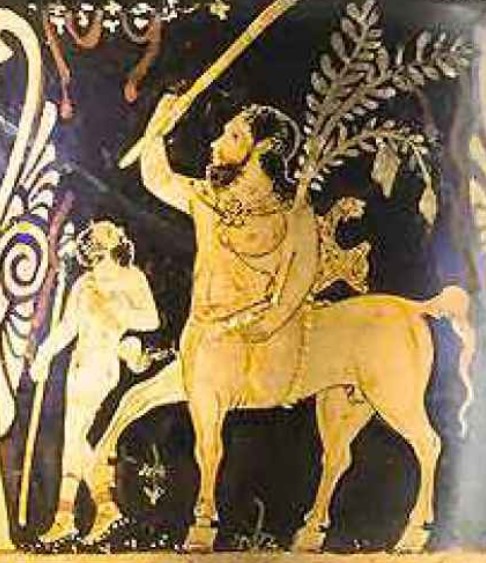
Centaur Chiron accompanied by a satyr
The version that seems to best explain the great hostility between the Lapiths and the Centaurs tells that they were brother peoples because they were born as twin sons of Apollo and the nymph Stilibe, god daughter of the river Peneus which flows with its tributaries in the valleys of Thessaly making that land rich of life and ideal place for horse breeders.
The twins born by Stilibe were Lapith and Centaur; Lapith became a strong and skilled warrior while Centaur was born deformed and led his life grazing the horses on Mount Pelion and joining the mares. Lapith's descendants conquered the thrones of Thessaly and became famous among men and gods demonstrating superior abilities like Ixion and Pirithous; Centaur's descendants took the form of half man and half horse and developed their abilities to the extreme, excelling in virtues but also in vices and were known as the wisest beings but also the cruellest. Especially the Centaurs were not able to keep control of their instincts.
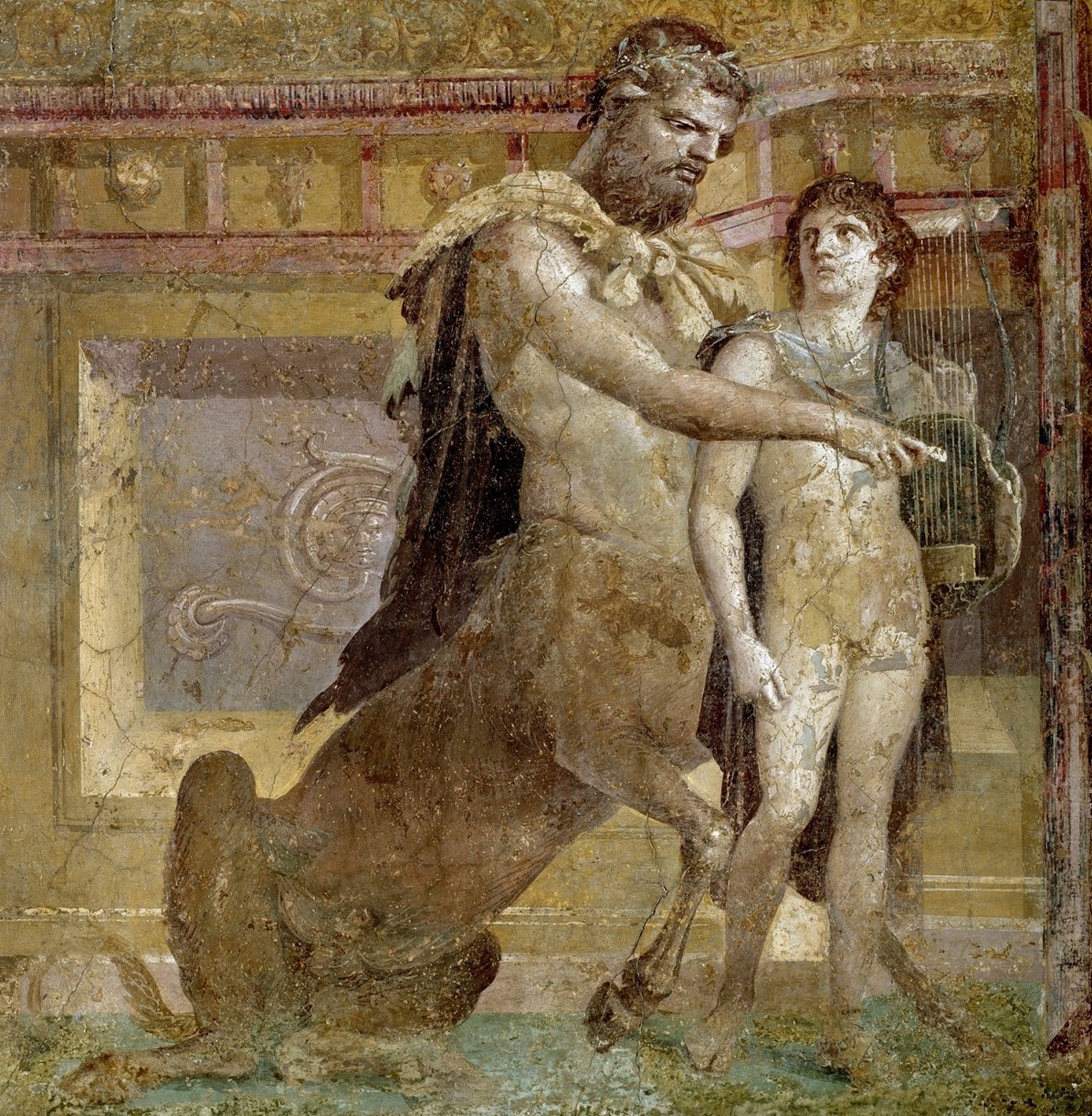
Centaur Chiron teaching Achilles to tune the lyre, fresco from Herculaneum - National Archaeological Museum of Naples IT
Yet they knew how to be even wiser than most men, and Chiron certainly was and to him even the gods entrusted their children to be educated. Many went to Mount Pelion to entrust their children to the Great Being to teach them to be skilled archers and knights, to know sky and the laws that regulate movements of the stars and the seasons, to play the instruments that can evoke feelings but also the harsh laws of war.
His disciples were Asclepius, Meleager, Heracles, Theseus and many others up to Achilles who had him as a teacher already advanced in years.
First part: rev.0 by M.L. ©ALL RIGHTS RESERVED (Ed 1.0 - 26/03/2023)
